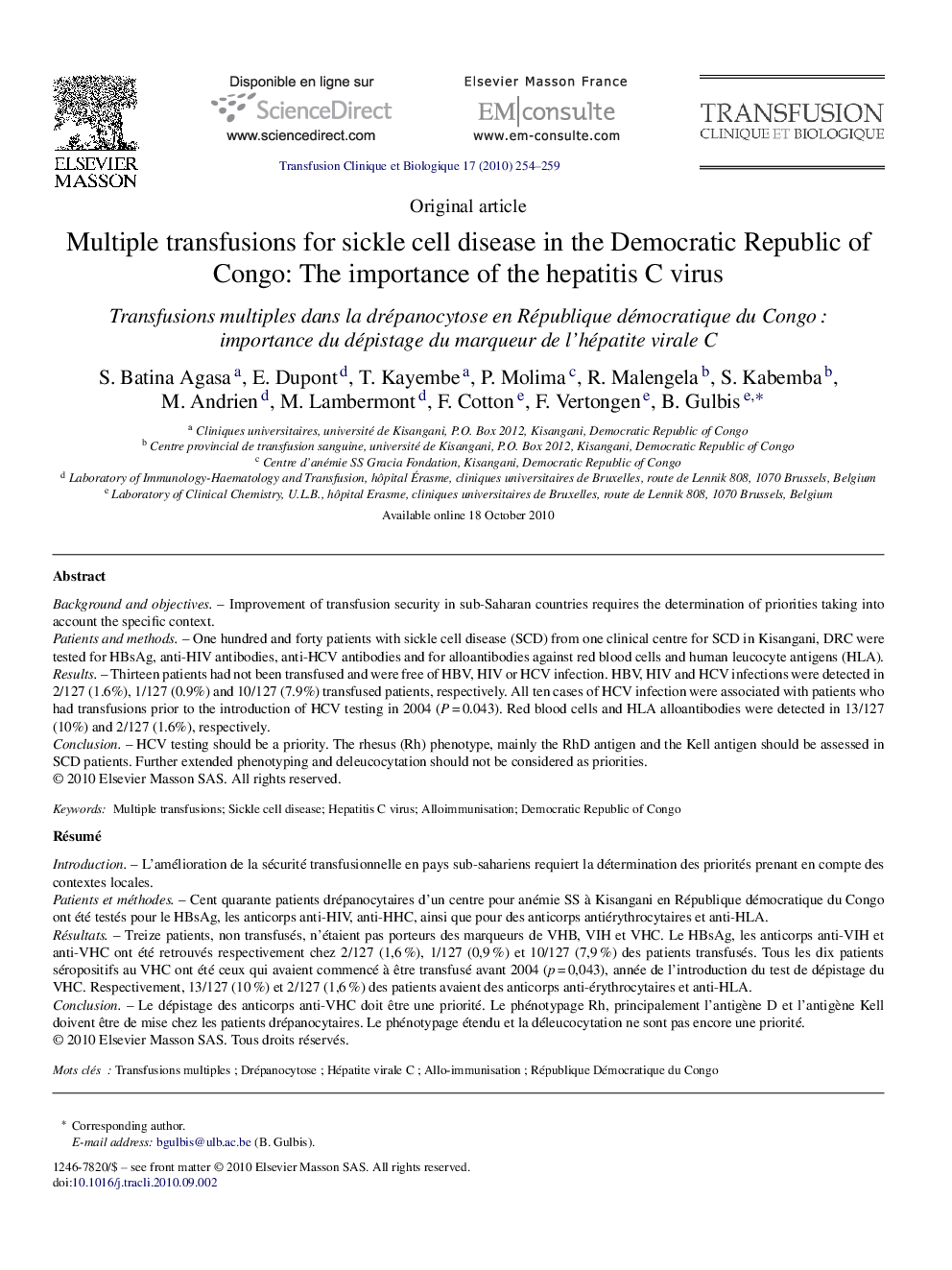| کد مقاله | کد نشریه | سال انتشار | مقاله انگلیسی | نسخه تمام متن |
|---|---|---|---|---|
| 1105845 | 954209 | 2010 | 6 صفحه PDF | دانلود رایگان |

Background and objectivesImprovement of transfusion security in sub-Saharan countries requires the determination of priorities taking into account the specific context.Patients and methodsOne hundred and forty patients with sickle cell disease (SCD) from one clinical centre for SCD in Kisangani, DRC were tested for HBsAg, anti-HIV antibodies, anti-HCV antibodies and for alloantibodies against red blood cells and human leucocyte antigens (HLA).ResultsThirteen patients had not been transfused and were free of HBV, HIV or HCV infection. HBV, HIV and HCV infections were detected in 2/127 (1.6%), 1/127 (0.9%) and 10/127 (7.9%) transfused patients, respectively. All ten cases of HCV infection were associated with patients who had transfusions prior to the introduction of HCV testing in 2004 (P = 0.043). Red blood cells and HLA alloantibodies were detected in 13/127 (10%) and 2/127 (1.6%), respectively.ConclusionHCV testing should be a priority. The rhesus (Rh) phenotype, mainly the RhD antigen and the Kell antigen should be assessed in SCD patients. Further extended phenotyping and deleucocytation should not be considered as priorities.
RésuméIntroductionL’amélioration de la sécurité transfusionnelle en pays sub-sahariens requiert la détermination des priorités prenant en compte des contextes locales.Patients et méthodesCent quarante patients drépanocytaires d’un centre pour anémie SS à Kisangani en République démocratique du Congo ont été testés pour le HBsAg, les anticorps anti-HIV, anti-HHC, ainsi que pour des anticorps antiérythrocytaires et anti-HLA.RésultatsTreize patients, non transfusés, n’étaient pas porteurs des marqueurs de VHB, VIH et VHC. Le HBsAg, les anticorps anti-VIH et anti-VHC ont été retrouvés respectivement chez 2/127 (1,6 %), 1/127 (0,9 %) et 10/127 (7,9 %) des patients transfusés. Tous les dix patients séropositifs au VHC ont été ceux qui avaient commencé à être transfusé avant 2004 (p = 0,043), année de l’introduction du test de dépistage du VHC. Respectivement, 13/127 (10 %) et 2/127 (1,6 %) des patients avaient des anticorps anti-érythrocytaires et anti-HLA.ConclusionLe dépistage des anticorps anti-VHC doit être une priorité. Le phénotypage Rh, principalement l’antigène D et l’antigène Kell doivent être de mise chez les patients drépanocytaires. Le phénotypage étendu et la déleucocytation ne sont pas encore une priorité.
Journal: Transfusion Clinique et Biologique - Volume 17, Issue 4, October 2010, Pages 254–259